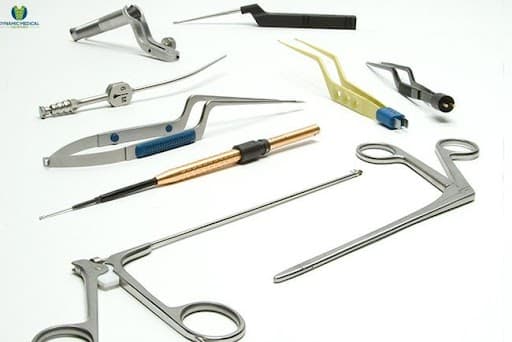
The Basic Neurosurgery Instruments for Micro Procedures
Neurosurgery is the most demanding and highly complicated field of medicine.
Neurosurgery is the most demanding and highly complicated field of medicine. It deals with the diagnosis of complications related to the central nervous system. It demands a sense of empathy and dexterity for a successful operation. Formerly, neurosurgeons performed procedures on a macro level, but the need for bleeding and tissue damage control led to the evolution of micro procedures, typically known as micro-neurosurgery or microsurgery for the brain.
Microsurgery is a new term; it means surgery performed on body structures on a micro level, usually with the help of a magnifier. It has contributed mostly to the procedures done on the eye and brain. Being a distinctive domain, the instruments used for it are also distinct, known as micro instruments. In this blog, we will discuss the basic mechanics of some of these neurology tools:
- Scissors: They have finger ring holders with a lock mechanism for microvascular work. It may be straight or slightly angled. Due to their sensitive nature, they are usually in a metal case holder.
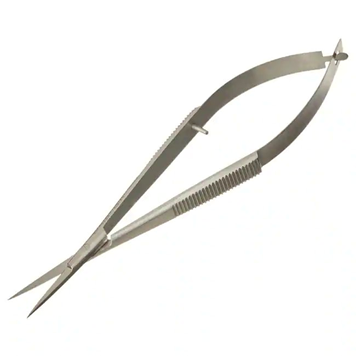
- Forceps: Long and fine bayonet forceps are used for microsurgical procedures and only under a microscope. Their tips are straight, sharp, and pointed. They are usually performed on structures less than 3 mm in width. A special kind of forceps known as hunt forceps is also used for this purpose. They have a special design with a toothed, circular tip for holding pathological tissue.

- Clamps:
- Bulldog clamps: The most common clamps in the field of neurosurgery are Bulldog clamps, which can be:
- Artery clamp: It is usually 15 cm long and designed so as not to damage the tissues.
- Carotid clamp: The handle is shaped like a bow, and the mouthpiece is at a right angle. It is used for internal and external carotid arteries.
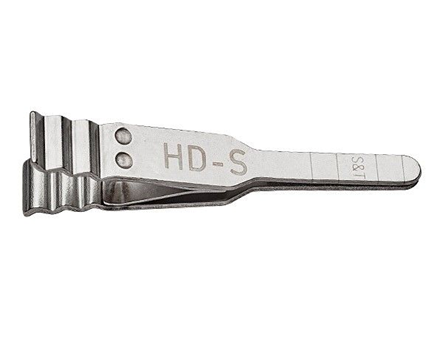
- Jacobson’s clamp: It is pen-like with pot’s teeth and specially designed for internal carotid.
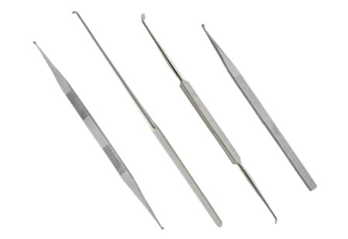
- Scoville clamp: A very small instrument with a small, rounded head. It takes up very little space in the operating room. It may be straight or angled.

- Micro clamps: They are used for vessels of 0.8 to 1.5 mm in diameter.
-
Curettes and dissectors: Curettes are very slender with sharp and pointed end pieces. Dissectors with double and different ends are also available, one with an oval shape and the other with a pointed shape.
-
Forceps and punches: They are 18 cm in length and are used for holding and resecting tissues. The mouthpiece may be round, oval, or fluted.
-
Scalpels: Scalpels consist of long, thin pieces of razor blades. They are the most suitable instruments for microincisions.
-
Hooks: Hooks are made from injection needles with their tip bent over, and their size and sharpness can be changed at will.
-
Needle holder: They are very long with spring grips and maybe with or without locks. They are used for the treatment of vessels with a diameter of less than 3 mm.
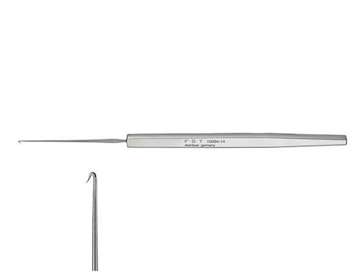
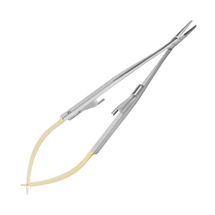
Conclusion
Neurology surgical instruments have continued to benefit the field of neurosurgery through a variety of technological advances. They are highly fragile and difficult to handle. Meticulousness is required for their maintenance. Please visit our website Dynamic for more information.
